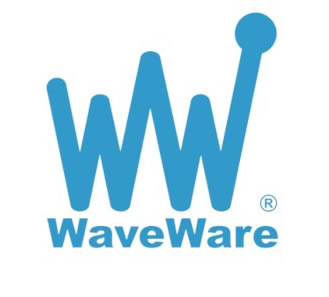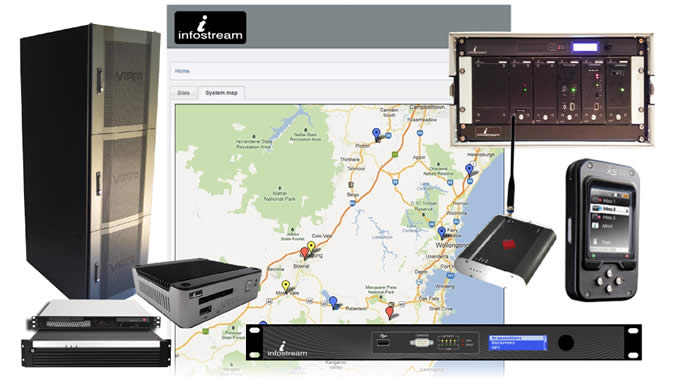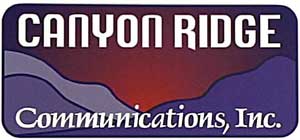Selected portions of the BloostonLaw Telecom Update, and/or the BloostonLaw Private Users Update — newsletters from the Law Offices of Blooston, Mordkofsky, Dickens, Duffy & Prendergast, LLP are reproduced in this section with the firm's permission. 
| BloostonLaw Telecom Update | Vol. 18, No. 2 | January 14, 2015 |

Sens. Thune and Upton Continue Crusade for New Telecom Act Senator John Thune (R-S.D.), chairman of the Senate Commerce, Science and Transportation Committee, and Representative Fred Upton (R-Mich.), chairman of the House Energy and Commerce Committee, authored an article renewing their call for new telecommunications legislation, a crusade they began last year under the hashtag #CommActUpdate. In today’s piece, the congressmen said that, “[u]sing Title II could result in billions of dollars in higher government fees and taxes on consumers’ monthly broadband bills,” citing to a Progressive Policy Institute report. “It also could extend new regulations to areas like mobile broadband without recognizing the unique challenges that mobile carriers face.” They said they plan to “pursue a public process to draft and enact bipartisan legislation that would protect the open Internet” and hope that FCC Chairman Tom Wheeler will join them “in working to build and enact a shared set of principles that will protect Internet users, promote innovation, encourage investment — and withstand legal challenge.” Headlines 
President Obama Announces Initiative to Promote Municipal Broadband Systems President Obama delivered a speech in Cedar Falls, Iowa today on the Obama Administration’s intentions to spur the growth of community broadband programs around the country. Citing the recent success of the cities of Chattanooga, Tennessee; Wilson, North Carolina; and Kansas City, Missouri in taking aggressive steps to improve broadband in their respective communities through bringing in new competition, leveraging municipal investments, and forming new partnerships, the President will announce several new initiatives, including: - A new effort formally opposing measures that limit the range of options available to cities and communities to spur expanded local broadband infrastructure, including ownership of networks. As a first step, the Administration is filing a letter with the FCC urging it to address laws in 19 states that prevent local communities from operating their own broadband networks.
- A Community Broadband Summit of mayors and county commissioners from around the nation, aimed at recognizing the efforts of the Next Century Cities coalition, a nonpartisan network pledging to bring fast, community-supported broadband to their towns and cities, and Gig. U, a partnership of 37 research universities to bring fast broadband to communities around their campuses. The Summit will also build on the US Ignite partnership, launched by White House in 2012, and which has grown to include more than 65 research universities and 35 cities in developing new next-generation gigabit applications.
- A new initiative by the Department of Commerce called “BroadbandUSA,” to promote broadband deployment and adoption by offering online and in-person technical assistance to communities; hosting a series of regional workshops around the country; and publishing guides and tools that provide communities with proven solutions to address problems in broadband infrastructure planning, financing, construction, and operations across many types of business models.
- A revamped broadband loan program through the Department of Agriculture which offers financing to eligible rural carriers that invest in bringing high-speed broadband to unserved and under-served rural areas.
- A new Broadband Opportunity Council of over a dozen government agencies with the goal of speeding up broadband deployment and promoting adoption, and soliciting public comment on unnecessary regulatory barriers and opportunities to promote greater coordination.
The speech was delivered at 2 p.m. CST at the Cedar Falls Utilities campus, an electric utility company that provides electricity, natural gas, water, cable television, and internet service to the surrounding community. “In too many places across America, some big companies are doing everything they can to keep out competitors," Obama said. "Today, I'm saying we're going to change that. Enough's enough.” Obama indicated that his administration will provide technical and financial assistance to towns and cities that want to improve Internet service for the public. The proposed assistance will purportedly not require congressional approval and will be discussed in the State of the Union address next week. In a statement released today that does not directly reference the letter noted above, Commissioner Ajit Pai said, “As an independent agency, the FCC must make its decisions based on the law, not political convenience. And U.S. Supreme Court precedent makes clear that the Commission has no authority to preempt state restrictions on municipal broadband projects. The FCC instead should focus on removing regulatory barriers to broadband deployment by the private sector.” Details on Net Neutrality Order to be Released Feb. 5; Ex Parte Parade Marches On Speculation on what will be in the FCC’s upcoming Net Neutrality order continues to grow as the February Open Meeting, at which the FCC confirmed it intends to consider the item, draws near. On January 7, the New York Times reported that Chairman Tom Wheeler “appears poised to propose new rules that would classify Internet service providers as public utilities in a move designed to ensure everyone has the same access to free content online.” As we reported in the previous edition of the BloostonLaw Telecom Update, the FCC is planning to consider an order on Net Neutrality at its February open meeting. According to the New York Times, the Chairman “strongly indicated” that he favors the shift to tougher regulations, describing it as “just and reasonable” during an appearance in Las Vegas at the International CES show. Chairman Wheeler also said he intends to release the full details of his proposal Feb. 5, almost three weeks ahead of the February 26 open meeting. In the meantime, the FCC has been (and likely will continue to be) bombarded with ex parte presentations on a variety of aspects associated with Internet regulation (or non-regulation). On January 6, Vonage emphasized its support for a Title II approach and reiterated its views that there should be a presumption against paid prioritization, but that such a presumption could be overcome where a provider demonstrates it would be in the public interest. On January 6 and 7, Akamai Technologies — a cloud computing and content delivery company — asked the FCC to recognize that content delivery networks “do not sell transport and do not offer any services that could be considered Title II services,” and that “using software and mathematics to identify preferred locations and routs for users to access content in a way that avoids congestion on the Internet does not constitute prioritization.” On January 7, NTCA met with Chairman Wheeler’s Special Counsel and urged the FCC to rely upon Section 706 to apply basic no blocking and transparency/disclosure requirements to retail broadband Internet access services, and to use targeted application of specific provisions of Title II only on transmission and exchange of data. On January 8, AT&T filed a letter responding to earlier communications by Public Knowledge and others supporting the classification of wireless broadband as a CMRS service. In its letter, AT&T said that “retaining the existing classification of broadband Internet access services as information services — and using the Commission’s authority under Section 706 to adopt rules for those services — is the best (and only) means of ensuring the uniform treatment of all broadband services.” January 9 saw a letter by the American Cable Association, NCTA and WISPA ask the Commission to conduct an en banc hearing to examine the economic impact of its open Internet proposals on small broadband providers before circulating a draft order, and another separate letter from NCTA stating that the Commission should not take any action in the open Internet proceeding that would interfere with existing pole attachment rights for cable operators and telecommunications carriers under Section 224. FCC To Define Broadband as 25 Mbps Down and 3 Mbps Up for Reporting Purposes According to technology news source Ars Technica , FCC Chairman Tom Wheeler is proposing to raise the definition of broadband to 25Mbps downstream and 3Mbps upstream for the purposes of the Annual Broadband Report mandated by Congress under Section 706 of the Communications Act. This does not require providers to actually offer 25/3, but will affect how the FCC reports whether broadband “is being deployed to all Americans in a reasonable and timely fashion” in its report. According to a fact sheet provided by the FCC to Ars: - 17 percent of Americans (53 percent of rural Americans) lack access to 25Mbps/3Mbps service.
- Demand for 25/3 service is roughly the same in urban and rural areas (28 percent of rural Americans and 30 percent of urban Americans have adopted 25/3 service where available).
- Rural America continues to be under-served at all speeds: 20 percent lack access even to service at 4Mbps/1Mbps, down only 1 percent from 2011, and 31 percent lack access to 10/1, down only 4 percent from 2011.
- 63 percent of Americans living on Tribal Lands lack access to 25/3 broadband, while only 8 percent of urban Americans lack access to 25/3 broadband.
- Overall, the broadband availability gap closed by only 3 percent last year.
- Approximately 35 percent of schools lack access to fiber, and thus likely lack access to broadband at the Commission’s shorter term benchmark of 100Mbps per 1000 users (and even fewer have access at the long-term goal of 1Gbps per 1000 users).
Ars further reports that the draft report does not offer any conclusions about why Americans are being denied advanced telecommunications capabilities, but it does seek public comments on what the FCC should do to accelerate deployment. The draft report also does not appear to distinguish between rural areas served by rate-of-return carriers and those served by price cap carriers. At this time, the report is not yet scheduled for Commission vote. Supreme Court Reverses Decision Keeping Cell Tower Out of Residential AreaIn T-Mobile-South v. City of Roswell, Georgia, a 6-3 majority of the US Supreme Court today reversed a ruling by the U.S. Court of Appeals for the Eleventh Circuit in favor of Roswell, which had rejected T-Mobile's proposal to build a tower on a tract of land surrounded by single-family homes, even though the tower would have been camouflaged to look like a tree. The federal appellate courts had divided over how and when local governments should explain their reasons for denying a tower approval, as required by Section 332 of the Communications Act. Congress crafted Section 332 as an attempt to strike a balance between the rights of state and local governments to regulate safety and aesthetics, versus the Federal interest in ensuring ubiquitous wireless services. It requires that any decision denying construction or modification of a wireless service facility be in writing and “supported by substantial evidence contained in the record." The Supreme Court’s decision is not a blank check for tower proponents, and the underlying permit denial must be read in the context of the facts of the case, including existing wireless coverage in the target community. But the ruling seems to suggest that state and local governments must be more precise in their handling of tower permit denials. The Eleventh Circuit had ruled that Roswell had satisfied Section 332, because T-Mobile had its own transcript of the meeting in which the city council voted against the tower, and a written letter describing the decision and advising T-Mobile that it could obtain the minutes. The Supreme Court ruled that the law requires that the tower proponent be provided the reasons for the permit denial. Those reasons “need not be elaborate or even sophisticated,” but “simply clear enough to enable judicial review.” Aside from the letter to the tower proponent, “[a] locality may satisfy its statutory obligations if it states its reasons with sufficient clarity in some other written record issued essentially contemporaneously with the denial,” the majority opinion stated. Although Roswell stated the reasons for the denial in the minutes of the city council meeting, it issued those minutes 26 days after the date of the written denial and just four days before T-Mobile's deadline for seeking judicial review. The Supreme Court indicated that, because the issuance of the denial letter starts a 30-day challenge clock, the reasons for the denial must be issued at approximately the same time as the letter. Justice Samuel Alito Jr. concurred, writing: “Nothing we say today should be read to suggest that when a locality has erred, the inevitable remedy is that a tower must be built. The court has not passed on what remedial powers a 'court of competent jurisdiction' may exercise. This unanswered question is important given the federalism implications of this statute.” Chief Justice John Roberts Jr., joined by Justice Ruth Bader Ginsburg and in part by Justice Clarence Thomas, dissented. He said Roswell lost “because of a question of timing: The written record was not made available roughly the same day as the denial—a requirement found nowhere in the text of the statute.” Justice Clarence Thomas also dissented. Law & Regulation 
AT&T Files Motion to Dismiss in FTC Complaint on Data Throttling On January 5, AT&T filed a motion with the Northern District Court of California to dismiss the Federal Trade Commission’s complaint of October 28, 2014, in which the agency alleged that AT&T failed to adequately disclose its data throttling practices to customers. In its motion, AT&T claimed the FTC lacks authority to bring suit against AT&T because Section 5 of the Federal Trade Commission Act exempts from the Act’s coverage all common carriers subject to the Communications Act of 1934. According to AT&T, the exemption is designed to ensure that entities already subject to another agency’s regulatory authority will not face potentially inconsistent regulation under the more general terms of the FTC Act, and that the alleged activities the FTC is seeking to regulate are already subject to regulation by the FCC. As we reported in the October 29 edition of the BloostonLaw Telecom Update, the FTC alleged that AT&T failed to adequately disclose to its customers with unlimited data plans that once they reach a certain amount of data use in a given billing cycle, the company reduces – or “throttles” – their data speeds by up to 90 percent – to the point that many common mobile phone applications like web browsing, GPS navigation and watching streaming video became difficult or nearly impossible. These practices allegedly began in July of 2011, and imposed restrictions when a customer’s monthly data usage threshold in some markets was as low as 2 GB per billing cycle. The complaint seeks a permanent injunction to prevent future violations of the FTC Act, and could result in significant fines against AT&T, as well as refunds being paid to AT&T customers who were harmed by the practice. The FTC vote authorizing the staff to file the complaint was 5-0. FCC Issues Tentative Agenda for January 29 Open Meeting On January 8, the FCC issued the tentative agenda for its upcoming Open Meeting scheduled for Thursday, January 29. According to the announcement, the FCC will tentatively consider two items at the meeting: - a Report and Order to ensure that accurate caller location information is automatically provided to public safety officials for all wireless calls to 911, including for indoor calls, to meet consumer and public safety needs and expectations, and to take advantage of new technological developments.
- a presentation on the new Consumer Help Center that provides an easier-to-use, more consumer-friendly portal for filing and monitoring informal consumer complaints, as well as accessing educational materials.
The Open Meeting is scheduled to commence at 10:30 a.m. EST, and will be shown live at www.fcc.gov/live. FCC Extends Comment Deadline for Part 1 Competitive Bidding NPRM On January 13, the FCC issued an order extending, of its own motion, the deadlines for comment and reply comment in response to the Notice of Proposed Rule Making (NPRM) on reforming certain Part 1 rules governing competitive bidding for spectrum licenses. Comments are now due February 6 and reply comments are due February 26. The FCC’s NPRM proposes to modify eligibility requirements, update the standardized schedule of small business sizes, and eliminate duplicative reporting requirements, and seeks comment on whether to strengthen rules to prevent the unjust enrichment of ineligible entities. It also proposes to amend the former defaulter rule, codify an established competitive bidding procedure that prohibits the same individual or entity from becoming qualified to bid on the basis of more than one short form application in a specific auction, and to prevent entities that are exclusively controlled by a single individual or set of individuals from becoming qualified to bid on overlapping licenses based on more than one short-form application in a specific auction. Finally, the FCC also proposes to retain the current rules governing joint bidding arrangements among non-nationwide providers and prohibit joint bidding arrangements among nationwide providers. The FCC already extended the comment deadlines once before, because the bidding in Auction 97 remained ongoing during the second week of December, to increase the likelihood that interested parties would be able to take into account more complete information about the results of the bidding in Auction 97. Since Auction 97 has still not yet concluded, the FCC is extending the comment deadlines again on the same rationale. Rep. Latta Reintroduces Bill Prohibiting Internet Reclassification as Utility On January 12, Congressman Bob Latta (R-OH), Vice Chairman of the House Energy and Commerce Committee’s Communications and Technology Subcommittee, reintroduced legislation “to ensure the Internet remains open and free from government interference” by limiting the FCC’s authority to regulate broadband under Title II of the Communications Act. The proposed legislation would amend the Act by revising the definitions of “common carrier” and “telecommunications carrier” to specify that “[s]uch term does not include a provider of an information service or of advanced telecommunications capability when engaged in the provision of such service or capability.” It would also amend the definition of “telecommunications service” to specify that “[s]uch term does not include any service that is an information service, any component of an information service, or advanced telecommunications capability.” Finally, the bill would add a new definition for “broadband internet service,” defining the term as follows: A mass-market retail service by wire or radio that provides the capability to transmit data to and receive data from all or substantially all Internet endpoints, including any capabilities that are incidental to and enable the operation of the communications service, but excluding dial-up Internet access service. Broadband Internet access service is an information service, and includes a service utilizing advanced telecommunications capability.
In a press release announcing the bill, Latta said, “The FCC’s plans to reclassify broadband under Title II are misguided. Imposing monopoly-era telephone rules on a 21stCentury industry that has thrived under the current light-touch regulatory framework will undoubtedly impede the economic growth and innovation that have resulted in the broadband marketplace absent government interference. These businesses thrive on dynamism and the ability to evolve quickly to shifting market and consumer forces. Subjecting them to bureaucratic red tape won’t promote innovation, consumer welfare or the economy. My legislation provides the certainty needed for continued investment in broadband networks and services that have been fundamental for job creation, productivity and consumer choice.” A full copy of the proposed legislation is available here . Mandatory E-Filing for Certain Proceedings Begins As of January 12, electronic filing through the Commission’s Electronic Comment Filing System (ECFS) is now mandatory for (1) formal complaints under Section 208 of the Communications Act and (2) pole attachment complaints under Section 224. Please note, however, that electronic filing is not available for section 208 carrier-to-carrier informal complaints. Both consumers and businesses may continue to file electronic informal complaints at http://www.fcc.gov/complaints, which is managed by the Consumer & Governmental Affairs Bureau. Industry 
British Prime Minister Plans to Ban Messaging Apps that Don’t Turn Over Communications The New York Times is reporting that on January 12, British Prime Minister David Cameron said he would pursue banning encrypted messaging services, such as Snapchat and WhatsApp, if Britain’s intelligence services were not given access to the communications. According to the report, the reforms are part of new legislation that would force telecom operators and Internet services providers to store more data on people’s online activities, including social network messages. “Are we going to allow a means of communications which it simply isn’t possible to read?” said the Prime Minister. “My answer to that question is: ‘No, we must not.’” The Times further reports that “last year, European officials met with some American tech companies, including Microsoft and Twitter, to discuss how companies could control what was published on their networks, though the companies have resisted greater oversight by intelligence services.” Deadlines 
FEBRUARY 2: FCC FORM 502, NUMBER UTILIZATION AND FORECAST REPORT. Any wireless or wireline carrier (including paging companies) that have received number blocks—including 100, 1,000, or 10,000 number blocks—from the North American Numbering Plan Administrator (NANPA), a Pooling Administrator, or from another carrier, must file Form 502 by February 2 (as February 1 falls on a Sunday this year). Carriers porting numbers for the purpose of transferring an established customer’s service to another service provider must also report, but the carrier receiving numbers through porting does not. Resold services should also be treated like ported numbers, meaning the carrier transferring the resold service to another carrier is required to report those numbers but the carrier receiving such numbers should not report them. Reporting carriers are required to include their FCC Registration Number (FRN). Reporting carriers file utilization and forecast reports semiannually on or before February 1 for the preceding six-month reporting period ending December 31, and on or before August 1 for the preceding six-month reporting period ending June 30. Calendar At A Glance 
January
Jan. 15 – Annual Hearing Aid Compatibility Report is due.
Jan. 19 – Reply comments on Part 22 Technical Changes are due.
Jan. 23 – Responses to USTelecom Petition for Reconsideration of Tech. Transition Declaratory Ruling due.
Jan. 29 – Deadline for Special Access Data Collection for large businesses with more than 1,500 employees.
Jan. 30 – Comments are due on the FCC’s Incentive Auction Procedures.
Jan. 31 – FCC Form 555 (Annual Lifeline ETC Certification Form) is due. February
Feb. 2 – FCC Form 499-Q (Quarterly Telecommunications Reporting Worksheet) is due.
Feb. 2 – FCC Form 502 (Number Utilization and Forecast Report) is due.
Feb. 5 – Comments are due on Technology Transitions NPRM.
Feb. 5 – Comments are due on Windstream Petition for Declaratory Ruling on DS1/DS3 Access.
Feb. 6 – Comments are due on Unlicensed Use of TV Band and 600 MHz Band Spectrum.
Feb. 6 – Comments are due on Part 1 Competitive Bidding NPRM.
Feb. 9 – Comments are due on the IntraMTA Petition for Declaratory Ruling.
Feb. 17 – Filing deadline for Community Connect grant applications.
Feb. 25 – Reply comments are due on Unlicensed Use of TV Band and 600 MHz Band Spectrum.
Feb. 26 – Reply comments are due on Part 1 Competitive Bidding NPRM.
Feb. 27 – Deadline for Special Access Data Collection for small businesses with less than 1,500 employees.
Feb. 27 – Reply comments are due on the FCC’s Incentive Auction Procedures. March
Mar. 2 – Copyright Statement of Account Form for cable companies is due.
Mar. 2 – Annual CPNI Certification is due.
Mar. 2 – FCC Form 477 (Local Competition & Broadband Reporting) is due.
Mar. 9 – Reply comments are due on Technology Transitions NPRM.
Mar. 9 – Reply comments are due on Windstream Petition for Declaratory Ruling on DS1/DS3 Access.
Mar. 11 – Reply comments are due on the IntraMTA Petition for Declaratory Ruling.
Mar. 31 – FCC Form 525 (Delayed Phasedown CETC Line Counts) is due.
Mar. 31 – FCC Form 508 (ICLS Projected Annual Common Line Requirement) is due.
Mar. 31 – International Circuit Status Report is due. | 






































 David George and Bill Noyes
David George and Bill Noyes

































